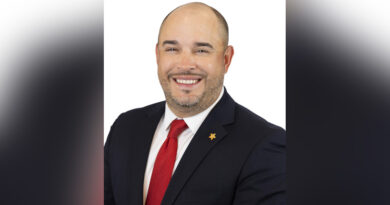Legislature Sends $248 Billion Budget to Abbott
By Cassandra Pollock
The Texas Tribune
The Texas Legislature’s two-year, roughly $248 billion state budget is headed to the governor’s desk after the House advanced the proposal Thursday, completing monthslong negotiations between the two chambers.
The spending plan, Senate Bill 1, is “a bill that each and every one of us can be very proud of, and it represents the priorities for Texans across the state,” said state Rep. Greg Bonnen, a Friendswood Republican and the House’s chief budget writer, on the House floor as he laid out the legislation.
The House’s 142-6 vote for SB 1 comes a day after the Senate unanimously approved the compromise, which state Sen. Jane Nelson, a Flower Mound Republican and chair of the Senate Finance Committee, said in a statement “is compassionate, responsible and meets the needs of our growing state.”
Once the 2022-23 spending plan lands on Gov. Greg Abbott’s desk, he will have the power to veto individual line items he objects to.
(Read:Our continuing coverage of the Texas legislature’s 87th session)
As passed by the Legislature, SB 1 would spend over $116 billion in general revenue and does not tap into the state’s Economic Stabilization Fund, also called the rainy day fund. That $116 billion matches Comptroller Glenn Hegar’s most recent projection at the beginning of the month for state funds available for the next biennium — and it’s an increase of $3 billion from his last estimate.
The approved $248 billion in SB 1 is about a $13.5 billion decrease from the 2020-21 budget cycle, thanks largely, if not all, to federal funding for coronavirus relief.
Questions over who should have a say in how that funding is spent have been a major point of discussion this session as lawmakers have moved through the budget-writing process.
The final version of SB 1, which lawmakers from both chambers negotiated behind closed doors, includes language that Bonnen said “works in concert with” Abbott’s recent announcement that he plans to place the allocation of nearly $16 billion in federal funds on the Legislature’s plate for a planned special session in the fall.
That $16 billion, Bonnen said Thursday, is money that “is simply not appropriated, so it’s not available, and it won’t be available, until we appropriate it in a special session in a few months.”
The language differs from what the House included in its version of the budget that it passed in April, which had a provision unanimously approved by the chamber that aimed to ensure the Legislature would have a say in how that federal relief money is spent.
SB 1, Bonnen said, also fully funds the state’s commitment to better fund public education, which state lawmakers acted on in 2019 via House Bill 3, a wide-ranging bill that reformed the state’s school finance system.
The budget also includes $8.6 billion for higher education, including $486 million to fund enrollment growth, which was added into the budget at the last minute and is seen as a victory for colleges, universities and health-related institutions.
It also includes $110 million for need-based financial aid for students at two- and four-year schools, though the additional funding would not cover every Texas college student who qualifies for this financial aid. Higher education officials estimate 56% of eligible four-year college students will be served with Texas Grants.
Some lawmakers also lamented that public historically Black colleges and universities remain underfunded, despite large appropriations requests this session. Lawmakers said Texas Southern University students are living in moldy dorms, and some have broken air-conditioning units.
“The conditions of a state institution in the state of Texas are shameful,” said Rep. Jarvis Johnson, D-Houston.
Throughout the coronavirus pandemic over the past year, the state’s fiscal forecast has changed dramatically. In January, Hegar, the state’s comptroller, projected that lawmakers would have to work with a nearly $1 billion deficit for the current budget, which was an improvement from the $4.6 billion projection he made last July. Even that smaller deficit disappeared when Hegar gave his final revenue estimate earlier this month.
“We started this process under a cloud of uncertainty,” said state Rep. Mary González, a Clint Democrat and vice chair of the House Appropriations Committee. “The Legislature’s job is to forge compromise that can meet the moment, and we have.”
Kate McGee contributed to this report.
The Texas Tribune is a nonpartisan, nonprofit media organization that informs Texans — and engages with them – about public policy, politics, government and statewide issues.









